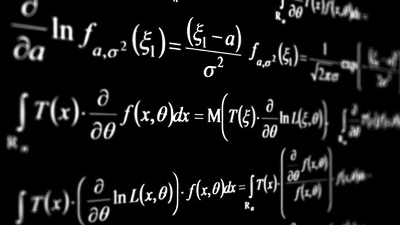As a result of using iterative practice software in the high school class, it became like this

While various methods of education using IT technology, such as learning tools using tablet PCs, are being sought, an American teacher gives "AnkiWe have published a report on the effect of one year of educational effectiveness using software capable of iterative learning called 'Successful learning' and succeeded in producing superb learning outcomes.
A Year of Spaced Repetition Software in the Classroom - Less Wrong Discussion
http://lesswrong.com/r/discussion/lw/mfm/a_year_of_spaced_repetition_software_in_the/
High school teacher tanagrabeast is an opinion exchange type community site "Less Wrong Discussion"I am writing a report on the results of introducing iterative learning software as an educational tool for my student.
Tanagrabeast is a teacher teaching national languages for ninth and tenth graders (junior high school third grader and senior high school student), thinking that iterative learning software might be useful for students' learning, introducing various software so far, Furthermore, as a result of programming educational software on its own, as a result, I came to iterative learning software named Anki and tried using the learning effect for one year in class.
Anki is a learning software that can answer the same problem repeatedly according to its difficulty and importance while answering the problems to be presented one by one, and wrong or important issues are correctly answered or less important The problem has the feature of being able to adjust the frequency of questions to be repeatedly issued, such as making a question on a long interval.
You can find out how to use Anki by watching the following movie.
Anki 2: Shared decks and review basics - YouTube
Tanagrabeast's school has a lower educational level than the average, and students rarely learn from themselves as a whole and few students have a willingness to take good grades in short. However, the extent of students' proficiency level was very wide, and there were students with reasonable learning achievement, and students who dropped out because they could not keep up with the curriculum were various.
In using Anki, tanagrabeast decided to take about 8 minutes to tackle Anki during a 55-minute Japanese class in anticipation that there is little effect in "self-study" style.

In Anki, 20 questions are issued with 20 cards per session in default setting, but tanagrabeast thinks that this is too much and restricted one session to 7, that is, 7 questions. And at the class each time we newly added seven new questions, mainly to important words such as terms, vocabulary, grammar etc. to 7 cards. In general, Anki seems to be often used as an auxiliary tool to reinforce the learned contents, but tanagrabeast aggressively adopted new learning content.
In addition to holidays on Saturdays, Sundays, and holidays, students of tanagrabeast seem to have had restrictions that many students register a week's holiday in the calendar, not necessarily every day with Anki. In general, programs are designed on the premise that Anki keeps learning continuously every day, but tanagrabeast is compromising that it is inevitable for the learning interval to be open about this point. However, even when the learning interval is opened, it seems that we adjusted the contents of the question so that we can incorporate the contents of the question into the card during the meantime and catch up little by little to the state of not being absent.
In this way, Mr. tanagrabeast used the Anki as a learning tool for one year, saying that "The results are good for improving grades for both poorly performing students and good-graded students".

ByLoren Kerns
Where the curriculum progresses with difficulty and speed according to "average student" in the class so far, Anki can learn with the frequency iterated according to yourself at the speed suited to you, so you can not follow the lesson I can imagine that it was effective for the students.
In addition, Mr. tanagrabeast thinks that it was meaningful also in mixing An extremely simple problem in Anki's question. Although it is not appropriate for general classes to issue problems for 6th grade (6th grade in elementary school) in classes in 10th grade (first grade in high school), this is enough ants in Anki. For a group with a relatively high level of proficiency, screening can be done by taking very long intervals until the question is too easy for a problem that is too easy. In contrast, for groups with low proficiency, increase the frequency of questions and answer You can get "success experience" repeatedly, and as a result it has the effect of raising motivation for learning.

On the other hand, students with a high level of proficiency and relatively high grades said that using Anki increased their learning speed and the effect was further improved. Again, due to the learning curriculum assuming "average student", students who learn pace faster than average assumption may not be able to proceed ahead tanagrabeast Thinks the evil of the current learning curriculum.
And, surprisingly students with medium grades failed to make effective use of Anki. "Average student" with medium grades did not show interest in Anki too much, even though it was incorrect at Anki, it seems that it has gone madly without worrying, tanagrabeast says, "How I do not know yet about whether students are able to use iterative learning effectively ".
Mr. tanagrabeast said that although learning outcomes of an iterative learning program incorporating Anki are not studies that prepared a control group, they said that they are certainly responding while pretending that it is not scientific. For this reason, Mr. tanagrabeast will also make further improvements, such as reducing the number of cards for quizzes, thinking about fun cards that students are more interested in, even for the next year, learning with Anki I am going to continue the program and I am very excited about how students will improve their learning outcomes in the second year of Anki learning.
Related Posts:







